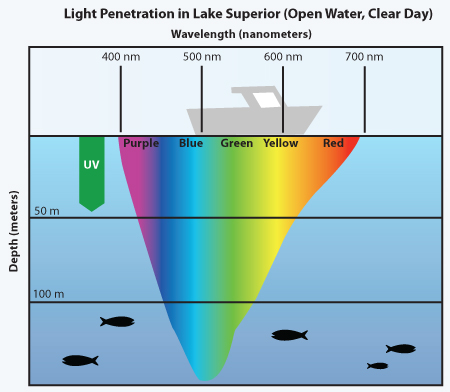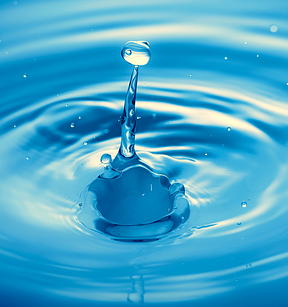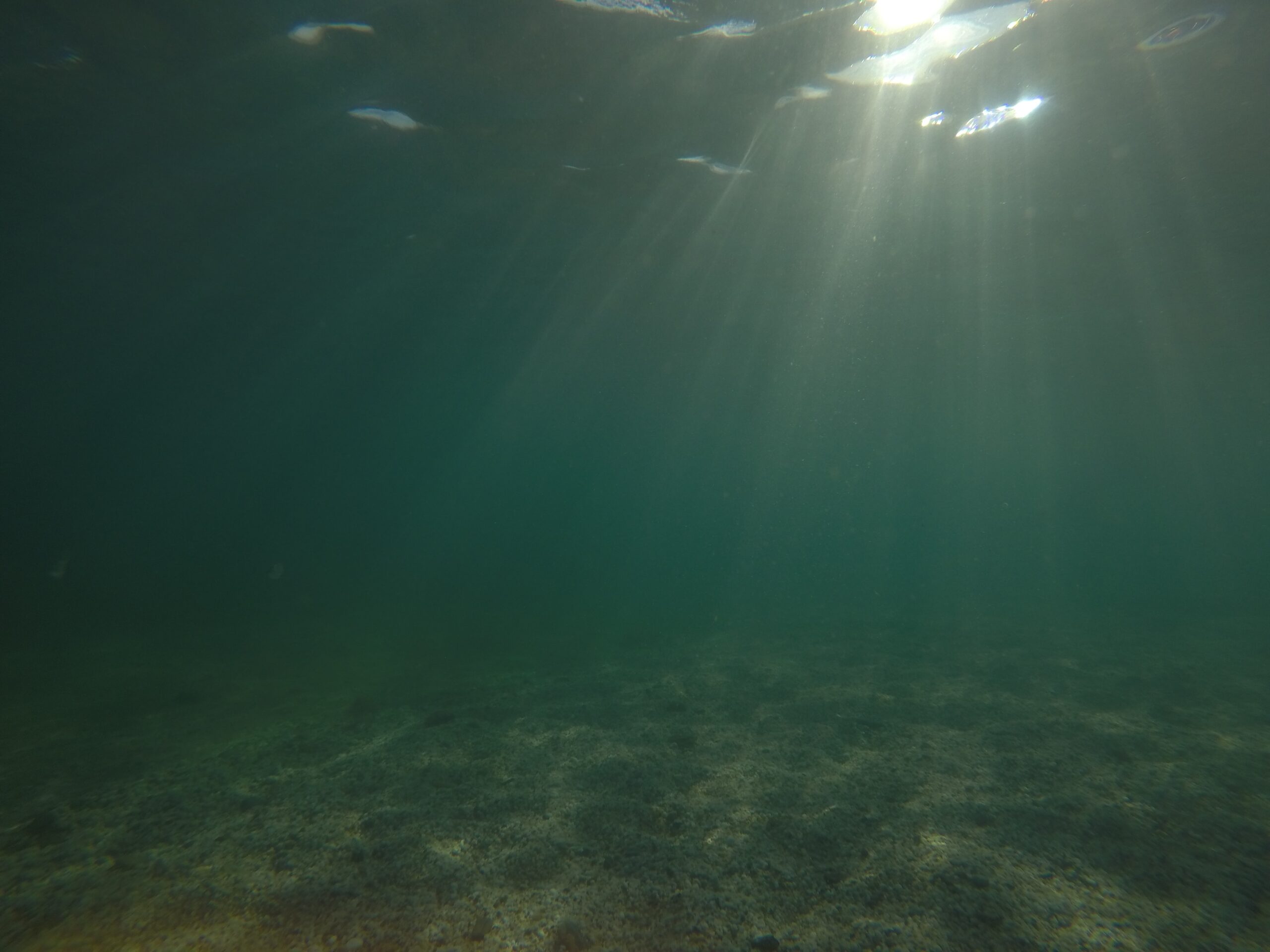Imagine flying over the ocean. Looking down from above, the ocean is dark blue, hiding its mysteries deep below the waves. Now imagine looking down on a glass of water. You can see right to the bottom of the cup.
Both the ocean and the glass contain water. So why do they look so different in color? The answer – water absorbs light, but not all at once.
The main light source on earth is the sun. Even though we always imagine the sun as yellow, the light the sun emits is actually white! Not only that, but white light is actually a mix of all the different colors of visible light all mixed together.
If you picture the famous album “Dark Side of the Moon”, by Pink Floyd, the white-to-rainbow light demonstrated is a very good approximation of how the different colors of light can be separated out from white light by a prism.
The different colors of light have other properties as well. Red light has higher energy and a shorter wavelength than purple light (To learn more about the physical properties of light, I recommend visiting NASA’s website, they do a great job of covering light’s properties). The different energy content of light interacts with water differently, resulting in some interesting phenomena.
Light in the Ocean
What happens when light hits water? At the very surface of the water, it seems very much the same as on land – we can see a full spectrum of colors. However, water is very good at absorbing red, orange, and yellow light. Just a few meters below the surface, red light is completely absorbed by water.
You may have already seen this happen. If you dive into the pool wearing red or orange, the color seems to fade to brown or even black as you near the bottom of the pool. This is light absorption at work.

However, the ocean is much deeper than a pool. As we go deeper and deeper into the ocean, orange, then yellow, then green light all get completely absorbed by the water. By the time we get down to about 80-100 meters deep, only about 1% of the sun’s light is left; the ocean has absorbed all the rest. At around 1000 meters deep, there is no longer any sunlight in the ocean, and it becomes pitch black.
These depths are not absolute, but are a good approximation of where light disappears in the ocean. Colors may penetrate deeper in areas that have fewer organisms and dirt particles floating in the water. Or, if there are a lot of microorganisms, light may completely disappear very close to the surface.
This natural disappearance of colors at different depths is actually helpful to many organisms. Deep sea organisms have evolved to have black, red, or orange coloration, because without those wavelengths of light, they are rendered virtually invisible!
To learn more about how organisms adapt to low light conditions, click here.
Curious about the ocean itself? Learn about how it works here.

